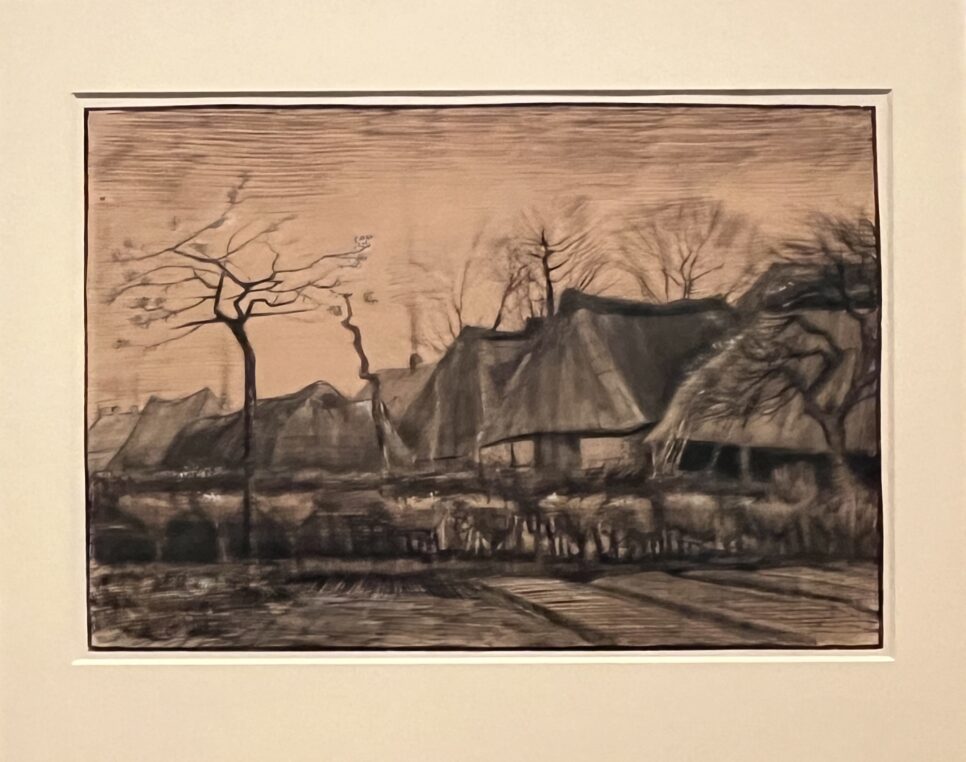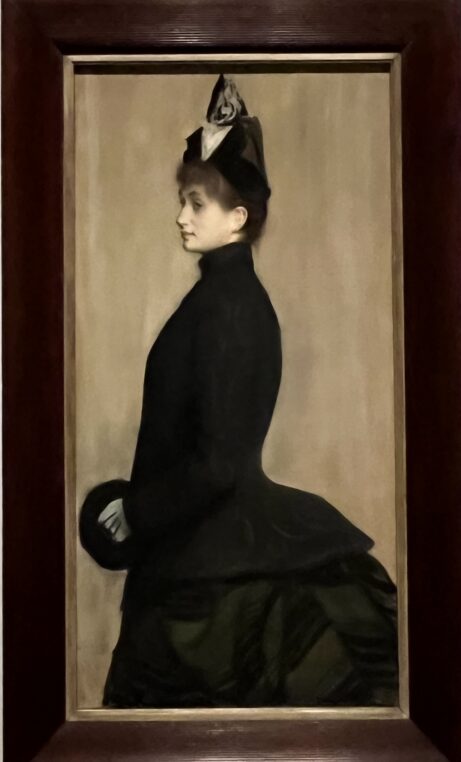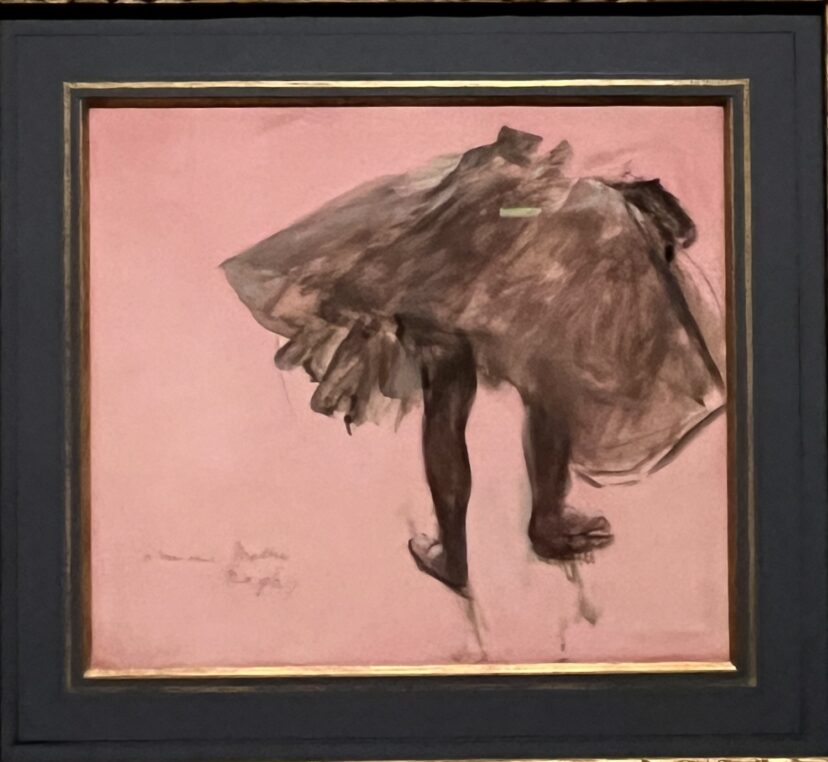I was invited to the Royal Academy to see yet another refined show, “Impressionists on paper” with 77 works by Monet, Degas, Van Gogh, Cézanne, but also Jacques Emile Blanche and Jean-Louis Forain, who is virtually unknown in England. The occasion was the celebration of the French Law firm Gide Loyrette Nouel’s 20 th anniversary of their London offices and Rupert Reece, head of the British team, was hosting the most interesting Franco British evening. “In a subtle but seismic shift, the artists lifted the status of works on paper – drawings, pastels, watercolours, temperas, gouaches – from something preparatory that you left in a studio, to artworks in their own right”. When hearing curator Christopher Lloyd explain with great ease, what the exhibition was all about, one felt like listening to an old times lecturer who spoke with no notes and enjoyed himself so much that his passion transported us. After teaching at Harvard, he was Surveyor of the Queen’s pictures for the Royal collection until 2005, and he certainly kept the royal manners…
After sipping a few glasses of champagne, we stumbled up the stairs to the exhibition rooms where Jacques Emile Blanche’s striking pastel on canvas of Madame Henri Wallet was expecting us. This society lady was married to Henri Wallet, a close friend of the painter, a founding member of Société des Artistes Français and founder of the French Fédération de tennis. The pastel on canvas is stunning and “ends the distinction between painting and drawing”. Next to it hangs a small project for a fan “Walk in the Snow” by Jean-Louis Forain, watercolor, ink wash and gouache highlights on paper. A little jewel.
A portrait by Degas of Jacques de Nittis’, the son of painter Giuseppe, is also a pastel on laid paper and is followed by “Dancer Seen form Behind”, an essence on prepared pink paper. Another drawing of charcoal and pastel on green paper was also lent by David Lachenmann. “Woman with a Veil” by Auguste Renoir is a pastel and colored chalks on wove paper, “Dance Card” by Jean-Louis Forain is a pastel on paper mounted on canvas. I had never before paid attention to all these techniques or supports. “Essence” is made by extracting linseed oil from oil paint then combining the remaining solute with an organic solvent such as turpentine. Laid paper has a ribbed linear surface texture, Wove paper was developed in the mid-eighteenth century and is made by pouring paper pulp into a mould with a very tightly woven wire mesh. Pastel is a dry powdery medium made from finely ground pigment and a small amount of binder such as gum arabic or gum tragacanth. All these details are described in the small booklet which you pick up at the entrance of the show.
An artist I did not know, Eva Gonzalès 1849-1883, painted a “Bride” in pastel lent by the Prince of Monaco. She was a protégée of Edouard Manet and a contemporary of Berthe Morisot. Emile Schuffenecker also, is less well known, and his “Coastal Cliffs, Normandy” lent by Stephen Ongpin Fine Art is very original. He started out as a stock broker and met Gauguin in the firm where hey both worked. He later took night art classes and became an artist. Armand Guillaumin is present with a pretty “Sky study” of 1869 lent by Petit Palais. A small unusual Van Gogh of the Fortifications of Paris in 1887 is a graphite and black chalk on paper.

Vincent van Gogh, “Thatched Roofs”, 1884, Ink, graphite and gouache on paper, Tate bequeathed by C. Frank Stoop
An incredibly romantic work by Henri de Toulouse Lautrec “Two friends” shows a tenderness with the gouache effect. It comes from the Emil Bürhle collection. Federico Zandomeneghi, a friend of Degas, is another painter I did not know, an he has a great scene of a woman waking up.
With Odilon Redon, finishes this exquisite exhibition , which reconciles paintings and drawings to an equal aesthetic status. Do not miss the show if you are in London before March 10. Royal Academy of Arts.
And make sure to go across the street to Fortnum‘s which has new exquisite collections of teapots and still serves Welsh rarebit at the Parlour on the first floor.
Share this Post





5 Comments on “The Royal Academy shows Impressionists on paper”
Loved that exhibition, thank you for drawing attention to it, and writing such a detailed review about it, encouraging people to visit.
So many wonderful posts this week–the impressionists on paper, the stained glass museum, Les amis du Louvre: a critic at the height of her craft. How lucky we are to have you as our guide.
Wonderful commentary on the show at the Royal Academy! I will be in London for the Book Fair and will definitely make a point of seeing it.
Baci,
Maria
Brilliant review Laure – you have captured the marvellous intimacy of the works.
De très jolis noms dont celui d’Armand Guillaumin. Peintre bien oublié. Bénéficiera-t-il d’une rétrospective en 2027 ?
Pour la petite histoire, le témoins de mariage de Guillaumin fut Zandomeneghi